Yamato Museum (Kure Maritime Museum) 呉市海事歴史科学館 大和ミュージアム
|
Title   • File Name • File Name   • Date • Date   • Position • Position   |
|

Kure Port in Hiroshima Prefecture. We arrived from Etajima island across the Seto Inland Sea. Kure is also a short train ride from Hiroshima Station.
|
|
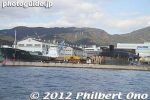
From the boat, we could see the dock where the Battleship Yamato was built in Kure, Hiroshima. "Kure" is pronounced "Kuray" not like the word "cure."
|
|
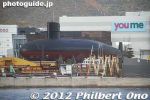
We could also see the submarine museum at the JMSDF Kure Museum adjacent to the Yamato Museum.
|
|

Kure is a major shipbuilding town.
|
|

Back of the Yamato Museum facing Kure Port.
|
|
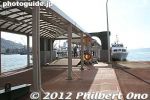
Kure Port dock.
|
|

Entering Kure Port terminal.
|
|

Welcome to Kure.
|
|
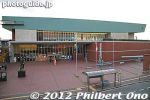
Yamato Museum's official name is Kure Maritime Museum. Although the 1/10 scale model of Battleship Yamato is the main attraction, it also has other exhibits explaining Kure's maritime history.
|
|

The Yamato Museum is open 9 am to 6 pm (enter by 5:30 pm). Admission is 500 yen for adults, 300 yen for high schoolers, and 200 yen for kids. Battleship Yamato was built in Kure.
|
|
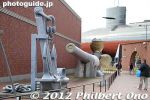
Outside the museum, a battleship gun and anchor are displayed.
|
|
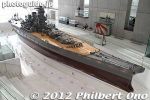
Yamato Museum's main attraction is this large scale model of Battleship Yamato. You can walk around it. This area of the museum is called Yamato Hiroba.
|
|

The scale model of the battleship is 26.3 meters long. It has been reconstructed as accurately as possible based on photographs and exploration of the wreck.
|
|
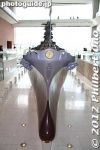
Battleship Yamato has an Imperial chrysanthemum crest on the bow. This was one of the things which helped to identify the wreck on the sea bottom.
|
|
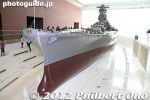
Battleship Yamato was commissioned a week after the Pearl Harbor attack in Dec. 1941. It was Japan's most powerful battleship and now legendary. It turned out to be great waste since the big guns were hardly used and it was sunk 4 years later.
|
|
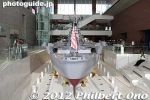
"Yamato" is another name for Japan, and so it is a very revered and prestigious name for any ship. Many movies, anime, etc., have been based on Battleship Yamato which retains a strong cultural influence in Japan.
|
|
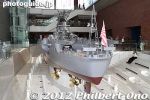
The Yamato's final mission was suicidal. It was ordered to go to Okinawa in April 1945 and beach herself offshore so it wouldn't sink. While beached, it would fire its guns at the enemy on Okinawa.
|
|
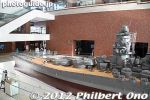
On her way to Okinawa, the Yamato was spotted by US submarines and aircraft and sunk by American carrier-based bombers and torpedo bombers on April 7, 1945.
|
|
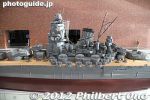
Since the Yamato was built in secrecy, there are very few clear photos of the ship.
|
|
|
|
|
|
|
|
|
|
|
|
|
|
|
|
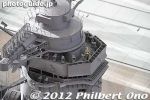
The model even has little human figures.
|
|
|
|
|
|
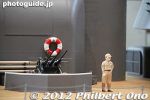
All aboard!
|
|
|
|
|
|
|
|
|
|
|
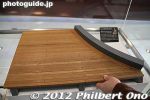
Sample wood paneling used for the model deck.
|
|
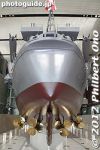
Propellers of Battleship Yamato.
|
|
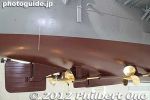
Rudder and propellers of Battleship Yamato.
|
|
|
|
|
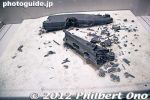
One exhibition room has a model of the Battleship Yamato wreck.
|
|

Admiral Isoroku Yamamoto's connection with Kure. On the bridge of the Yamato, he commanded the fleet at the Battle of Midway.
|
|
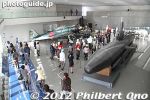
Another large exhibition room had a Japanese Zero fighter plane, kaiten manned torpedo, and midget submarine.
|
|
|
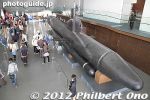
Midget submarine.
|
|
|
|
|
|
|
|
|
|
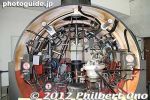
Midget submarine cockpit.
|
|
|
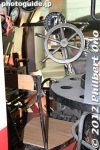
Midget submarine cockpit.
|
|

About midget submarines.
|
|
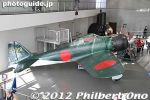
Japanese Zero fighter.
|
|
|

Japanese Zero fighter cockpit.
|
|
|
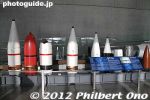
Gun shells
|
|
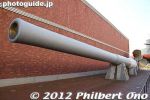
41-cm diameter gun from Battleship Mutsu, outside the Yamato Museum. Until the Yamato was built, the Mutsu was Japan's largest battleship.
|
|

Battleship Mutsu plaque. After seeing the Yamato Museum, be sure to cross the street over to the submarine museum called the JMSDF (Japan Maritime Self-Defense Force) Kure Museum.
|
|
|
|
|